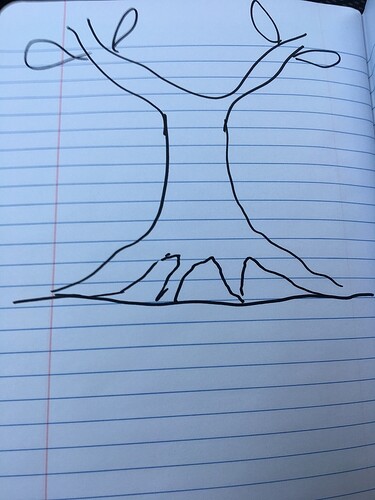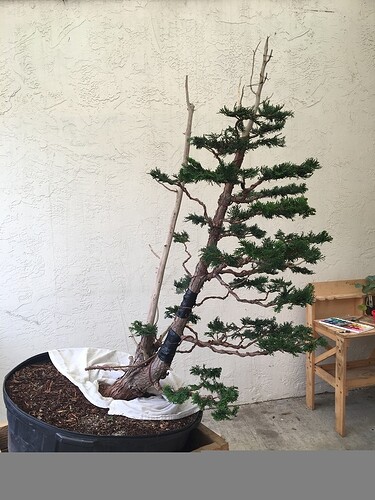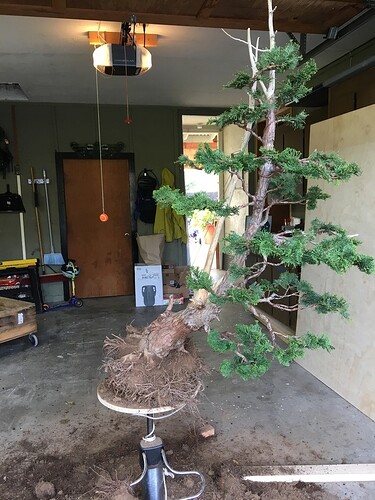I know i probably shouldn’t but; how safe it is (what are your experiences) to do some styling with pruning and then repotting the tree at the same time when tree is bought from nursery (field soil) or bought as a regular tree (also regular soil) from some random garden centre?
Hey Marko! In regard to how safe that is, generally speaking, I’d put that further down the unsafe side. Of course there are many factors that go into that, like how severe the work is and the type of tree. But if we remove foliage, vascular tissue, and roots, how is the tree going to recover? That’s what I would be wondering.
Thanks. I thought so… considering that the tree is healthy, is there any rule what is better to do first? Pruning and styling or repotting?
From what i’ve read, you should style and prune it first, but i am interested in what are your experiences and suggestions.
I don’t have the experience yet; I started accumulating trees last year and this spring is when I’m going to start working on them. Because I, too, have read and heard what you mentioned, I’ll be styling and pruning first except for my larch. It’s overgrown and restricted and its vigor was very lackluster last year. I spent the year fertilizing and trying to water correctly, saw a much more aggressive push of growth towards the end, and will now be re-potting this year.
This depends greatly on the species of tree. Boxwoods and ficus, for example, can be pruned, root pruned, and potted the same day. On the other end of the spectrum, you’ll have trees that you need to study for a year just to make sure they’ve arrived healthy.
With anything, bonsai, know your species before making any decision. Any decision.
@Carl & @MarkoB,
I am a big fan of repotting first. This is unfortunately something I had to learn the hard way. When building a bonsai we work from the bottom up, developing the nebari and trunk first. If you style first you won’t have any idea what that most important first part of the tree looks like.
So what might the current existing nebari look like on this nursery stock? You ask.
Well, it might look like total shit, which with nursery material is probable. In which case you’ll want to work on developing the roots. What you often find in a piece of nursery material is this:
But we want this:
To get there the roots need some work and for that you need a strong healthy tree with plenty of foliage to rebuild the root system you want.
Here is another scenario:
You get a tree like this:
You style it:
And you feel pretty good about your decisions.
Then you repot and find something amazing that would have totally changed how you designed that tree. Look at that nebari! I had two low, heavy branches at the soil line that would have been much better suited to the nebari.
Mega bummer bro. ![]()
So my advice is to always repot any tree that has an unfamiliar root system before styling. You just don’t have all the info about the tree to make good decisions.
Hi @MarkoB
The majority of my trees are from random garden centres too. I can’t claim to know what I’m doing, but this is my usual process.
Clean the tree. Cut out the dead and majorly faulty; this lets you get to know the tree.
Look for the nebary. Scrape back the soil, weeds and crap until you have an idea of what is going on below.
Basic structural wiring. Only if the tree is healthy. Most garden centre trees need a lot of development and bigger branches just get bigger.
Repot. Get as much nursery soil out as possible (leave some on conifers) and into an appropriate pot. Because most of these trees need years of development, it’s not usually a bonsai pot, but give them bonsai soil.
Developmental wiering. After the tree has established in the pot, set structure.
Grow, prune and wire. Once you have thickness and taper build second/tertiary branches.
Move into a smaller pot. Tree will start ramification and development will slow.
All of these this depends on so many different factors, so it is more of a direction than a plan, but the important questions to ask are “what am I trying to achieve?” and “is the tree healthy enough to take this work?”
I think this approach is pretty much spot on, from what i’ve experienced.
However, i’m going to say something controversial…
Depending on the material, how much you value it, and how much you are willing to lose it in order to gain:
-
Vital experience. If you are new to bonsai, you will need to practise your skills on something. If you get wiring more, get repotting more, and at least get the techniques while seeing how the trees respond (you’ll learn when you are doing too much etc). I know ryan described using cut branches to practice wiring, and this is obviously going to be the best way of increasing skills without doing damage… however this brings on point 2…
-
Human nature…Think about when you first started, and you wanted a tree that looked like a minature natural creation, or you wanted to start a hobby that you could really apply your creativity to… now, you get a piece of cheap nursey material, and ask someone: how do I make a bonsai out of this?
You get the response: put it in the ground for at least 5 years.
Its important to note that: This is mostly entirely true! to get a nice quality good tree, you need to start from a good base of many years growth.
However, if you are fired up and wanting to start a hobby, this is not the response which will inspire you to continue (to a complete beginner, like it did to me, this sounds like: its not really possible).
But… if you are encouraged to practise the techniques, and get it into a pot and vaguely looking like a minature tree, you will be more likely to keep with the hobby, and value the tree you have… this means you will strive to keep it alive, and if it does die, you will learn the pain and resolve to find out how to ensure the next creation stays healthy (then you start to focus on correct timings/ amount of work etc)
Im definitely not saying do this on a tree you cant lose…but on cheap nursey material, the learning experience might be worth the cost…
What does the community think?
Im not saying this is the right approach, i think it just tries to take into account a beginners viewpoint and human nature. I want more people to discover and stay with this artform 




